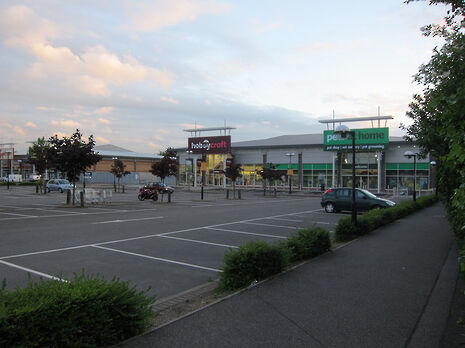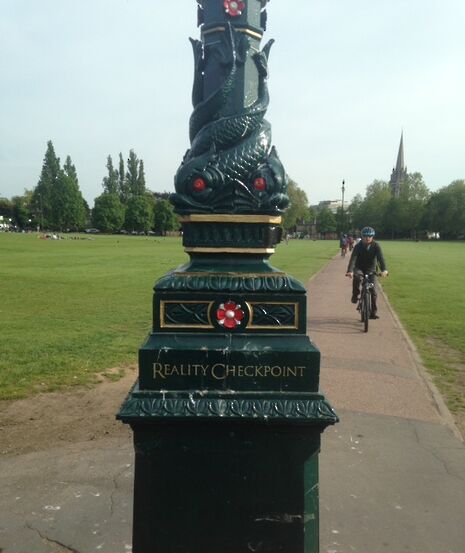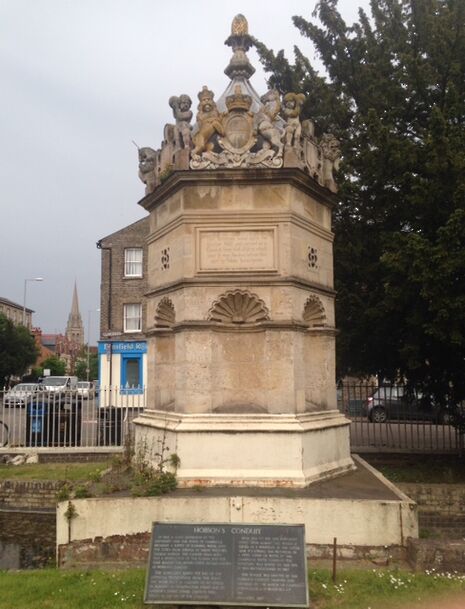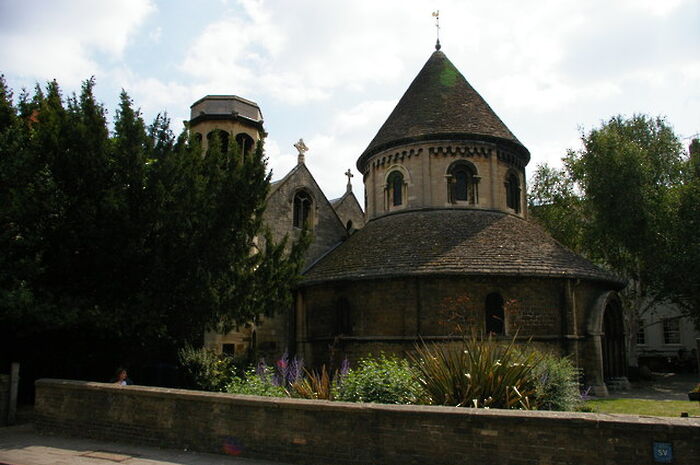Ditch the gown, and get into town
Cambridge distances play tricks on your mind – here’s a little walk to escape the bubble

‘The Cambridge Bubble’ is a phenomenon famed for bending space and time so powerfully that some of this country’s greatest physicists and philosophers, from Newton onwards, are said to have studied here largely so as to examine its effects up-close. Rumour has it that both the Corpus and Queens’ clocks were created in an attempt to figure out how one could turn up to a lecture 20 minutes late, when you swear that Sidge is only five minutes round the corner; and surely we all know how distant the small Sainsbury’s seems on a Sunday night when you’ve run out of toothpaste, and you need to write an essay, and that column, and it’s just not fair, OK?
We all know how distant the small Sainsbury’s seems on a Sunday night when you’ve run out of toothpaste
But hang on just a moment: what if it’s exactly this cloistered attitude that's created the problem in the first place? What if the town around us is totally bemused at our whining? In my own search for an answer, I have walked far and wide, whole kilometres this way and that: eastward to the spice racks of Mill Road’s whole food stores, westward to the brave new world of Girton and its surrounds. On my travels, I have come across a few rare spots where the seams of the gown run rough against the real life of the town, some of which I chart for you now. But be warned: once you’ve burst through the bubble it’s hard to get back, and the consequences aren’t for everyone. You may begin to wonder where those lost lecture minutes really did get to or why you settled for that toothpaste-free evening; you might even start to lose whole days to wandering the streets, or tracing the long path of the Cam – cut-off again in a new quixotism – as this correspondent knows only too well.

Where better to begin than at Reality Checkpoint itself, bang in the centre of Parker’s Piece: this strikingly ornate Victorian lamppost, adorned with contrasting floral and aquatic motifs, has become an unlikely symbol for the borderline between the University town and the modern city around it. In the 1970s, a tutor at the then Cambridge Art School – so the story goes – encouraged their students to paint on the words which now give the lamppost its name, in a sort of guerrilla protest; for a long time the city council attempted to cover up the students’ message, engaged in a battle of repeated paint-overs and repaintings. Recently though, a telling amnesty appears to have been reached, with the slogan currently engraved in proud gilt lettering.
Push past the Checkpoint if you can, beyond the safe bohemia of Mill Road and Anglia Ruskin’s campuses, to find Cambridge’s Beehive Centre. This is a retail park of the sort any suburbanite would instantly recognise: the identikit white stanchions, the furniture stores with their perpetual sales, the Toys-R-Us eyed jealously by children dragged out on their parents’ errands. I get there in a drizzle, grey skies and grey megastores the entire vista; but why stray so far from the vibrant town for this?

Aside from an excellently stocked M&S, walking to the Beehive offers a potent chance to see how the city morphs the further one escapes from its fantasy centre: the boutique stores of Trinity Street begin to elongate, grow until they are these behemoth hypermarkets; cobbled streets expand into frenetic carriageways and the bridges of the Cam find echoes in great overpasses; the hordes of people disappear until one walks more or less alone amidst the cars.
I turn back from the Beehive with more than just a fine selection of Marks’ pasta sauces, impressive though it is; I see that there are bigger things about than the pretty student city I thought I knew.
If the mile’s walk out to the Beehive seems a bit of a stretch, then fear not: the last stop on this tour is firmly in the bounds of the old city, in more than a simply geographical sense. The crowning fountain of Hobson’s Conduit was first erected on Market Hill in 1614, as part of a project to supply the town with clean drinking water from the south, employing a system of culverts and channels whose vestiges can still be seen in the watercourses along the sides of Trumpington Street.
It is here that the fountain now stands, distinctively decorated with gilded lions, unicorns, and cherubic figures. Part-funded by and named after the philanthropic stable-master Thomas Hobson – he of the phrase ‘Hobson’s choice’, a reference to his policy of only lending out the horse nearest his stable door – the Conduit was in fact a rare joint-venture between the town and the University, brought together by basic need. The waters of this collaboration still flow through the city, underground, though the fountain – too much in need of preservation now – no longer brings them to surface.
 News / Downing investigates ‘mysterious’ underground burial vault 29 December 2025
News / Downing investigates ‘mysterious’ underground burial vault 29 December 2025 News / Unions protest handling of redundancies at Epidemiology Unit30 December 2025
News / Unions protest handling of redundancies at Epidemiology Unit30 December 2025 Lifestyle / Ask Auntie Alice29 December 2025
Lifestyle / Ask Auntie Alice29 December 2025 Features / ‘Treated like we’re incompetent’: ents officers on college micromanagement30 December 2025
Features / ‘Treated like we’re incompetent’: ents officers on college micromanagement30 December 2025 Science / Astronomical events to look out for over the break29 December 2025
Science / Astronomical events to look out for over the break29 December 2025










